LAW FIRM SEO CHAPTERS
In today’s competitive digital landscape, law firms face a critical decision when it comes to online visibility: should they focus on organic search engine optimization (SEO) to rank in the search results naturally, or invest in paid Google Ads for immediate visibility? This comprehensive guide will explore the pros and cons of both approaches, providing you with the insights needed to make an informed decision for your law firm’s marketing strategy.
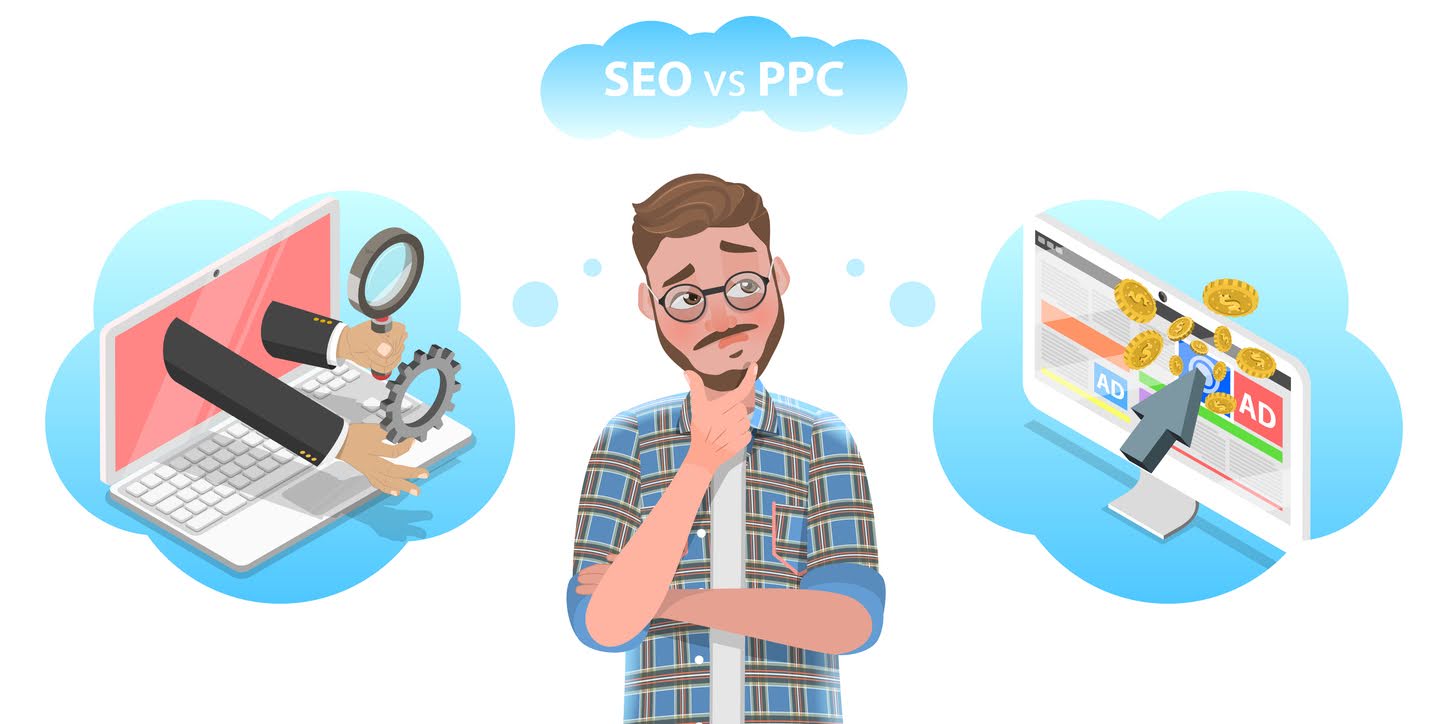
What is Organic Search Engine Optimization (SEO)?
Organic SEO refers to the practice of optimizing your website to rank higher in search engine results pages (SERPs) without paying for placements. This involves various techniques and strategies designed to improve the quality and relevance of your content, enhance user experience, and build authoritative backlinks.
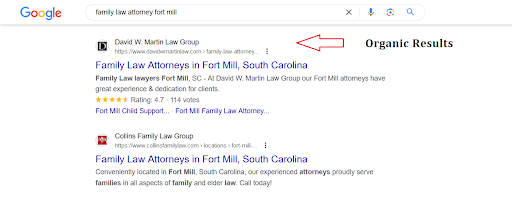
Key Components of SEO
- Keyword Research: Identifying relevant keywords that potential clients are searching for.
- On-Page Optimization: Optimizing individual pages with keywords, meta tags, headings, and content structure.
- Technical SEO: Ensuring your website is SEO technically sound, with fast load times, mobile responsiveness, and proper indexing.
- Content Creation: Producing valuable and engaging content that addresses your target audience’s needs and questions.
- Link Building: Acquiring high-quality backlinks from reputable sources to improve your site’s authority.
Examples of Different Types of Organic Exposure
1. Google’s Local Pack
The local pack highlights local businesses, drawing information from your Google Business Profile. This law firm appears at the top of Google search results, showcasing prominent reviews in a bright, eye-catching format. The visibility of these results can vary depending on the search location. For local businesses seeking increased exposure, the local pack offers a valuable opportunity.
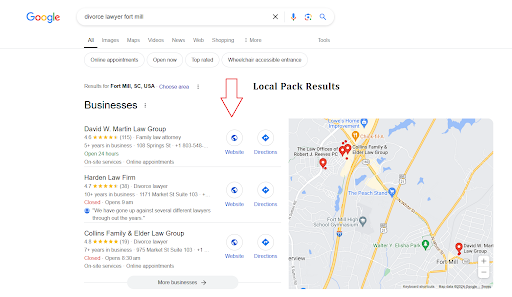
2. Plain Text Search Results
In search engine results, plain text entries are displayed with a blue title and a black description underneath. These entries typically include the business name, logo, and URL. The top five search results on Google capture approximately 70% of all clicks. As such, businesses are highly competitive in their efforts to secure a spot among the top ten search results.
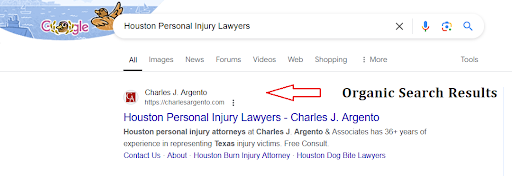
3. Video Rich Results
Google owns YouTube and favors video content by prominently displaying it in search results. Videos uploaded to YouTube have the opportunity to appear on the first page of Google, especially in video-rich sections. While not every video achieves this prime placement, securing a spot here can significantly enhance visibility.
For instance, in the example below, you can see a video created about law firm practitioner listings on Google that appears in these video-rich search results.
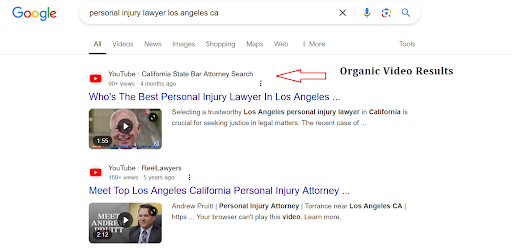
4. Featured Snippets
Featured snippets are prominent text excerpts displayed at the very top of Google’s search results page, often referred to as ‘Position 0.’ These snippets offer users concise, immediate answers to their queries, typically addressing informational questions. Instead of navigating to a website for more details, users can obtain the necessary information directly from the snippet.
Securing a featured snippet is highly desirable as it represents the most visible spot on Google’s search results page.
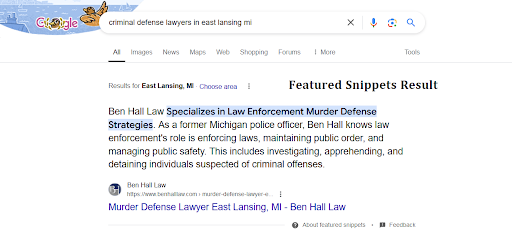
5. People Also Ask
The “People Also Ask” (PAA) feature on Google SERPs offers users a curated set of related questions and concise answers based on their initial search query. Unlike the featured snippet, which provides a single, quick response, the PAA section presents a range of questions and answers, allowing users to explore multiple facets of their inquiry.
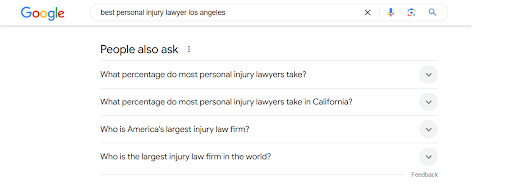
6. Other Ways to Rank Organically
Ranking organically on Google’s first page can be achieved through various strategies. While the methods mentioned earlier are among the most effective for generating organic traffic for our law firm clients, there are additional techniques worth considering. For a comprehensive list of these strategies, including:
- Event Rich Snippets
- Review Snippets
- Carousel Rich Snippets
- Data Snippet Tables
- Top Story Carousels
Benefits of Organic SEO
- Long-Term Results: Once you achieve high rankings, they can be maintained with less ongoing effort.
- Cost-Effective: While SEO requires an initial investment in time and resources, it does not involve direct costs per click.
- Credibility and Trust: Users often trust organic search results more than paid ads.
- Sustainable Traffic: Organic traffic can provide a consistent flow of visitors over time.
What is Google Ads?

Google Ads (formerly known as Google AdWords) is a paid advertising platform where businesses can create ads that appear at the top of search results and on various websites. Advertisers bid on keywords, and their ads are displayed based on their bid amount and ad relevance.
Key Components of Google Ads
- Keyword Targeting: Selecting keywords for which your ads will be displayed.
- Ad Creation: Designing compelling ad copy and visuals.
- Bid Management: Setting bids for how much you’re willing to pay per click or impression.
- Budget Management: Allocating a daily or monthly budget for your ad campaigns.
- Performance Tracking: Analyzing metrics such as click-through rates (CTR), conversion rates, and cost-per-click (CPC).
Examples of Different Types of Google Ads Exposure
1. Standard PPC Advertisements
A typical Pay-Per-Click (PPC) advertisement often resembles a standard text-based organic search result. You place bids on specific keywords, and your ad appears only when someone searches for those keywords (or close variations) and clicks on your ad.
For instance, in the example below, five paid ads are displayed before any organic listings. Many users may click on these ads without realizing they are paid placements.
PPC ads offer more than just a headline and body text. You can enhance your ads with additional features such as site links, callouts, images, call extensions, and location extensions. Given the limited space on Google’s first page, leveraging PPC ads is an effective strategy to secure a prominent position near the top of the search results.
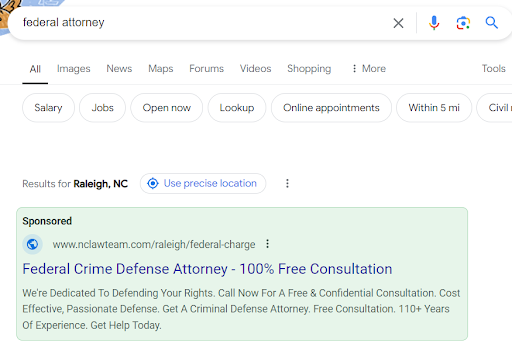
2. Local Listing Advertisement
Paid advertisements can enhance your visibility in local listings, particularly within the highly coveted local pack, which features just three businesses. By enabling location extensions and linking your Google Business Profile with your Google Ads account, you can improve your chances of appearing in the local pack through your ads.
3. Google Local Service Ads
With Google Local Service Ads (LSAs), advertisers are charged only when a customer reaches out directly through the ad, shifting the payment model from a per-click basis to a per-lead system.
Currently, 70 different business types qualify for Google Local Service Ads. To gain approval, businesses must pass a background check and provide details about their licenses and registrations. Initially, LSAs were available to professions such as attorneys, plumbers, and locksmiths.
These ads are prominently displayed above both organic search results and pay-per-click (PPC) ads, featuring a noticeable profile picture and customer reviews.
Benefits of Google Ads
- Immediate Results: Ads can start driving traffic to your site almost immediately after launching.
- Highly Targeted: You can target specific demographics, locations, and devices.
- Control Over Budget: You can set a maximum daily budget and adjust bids based on performance.
- Performance Insights: Google Ads provides detailed analytics to track ad performance and optimize campaigns.
Comparing Organic SEO and Google Ads
1. Cost
Organic SEO:
- Initial Investment: Requires investment in content creation, technical improvements, and ongoing optimization efforts.
- Long-Term Cost: Once high rankings are achieved, ongoing costs can be lower compared to paid ads.
Google Ads:
- Pay-Per-Click (PPC): You pay for each click on your ad, which can add up quickly depending on your keyword competition.
- Budget Flexibility: You can control your daily budget and adjust bids, but costs can be unpredictable.
2. Time to Results
Organic SEO:
- Long-Term Strategy: Achieving high organic rankings can take several months of consistent effort.
- Sustainable Growth: Once established, organic traffic can continue to grow and sustain over time.
Google Ads:
- Immediate Visibility: Ads can start appearing in search results as soon as your campaign is live.
- Quick Adjustments: You can make changes to your ads and keywords in real-time.
3. Traffic Quality
Organic SEO:
- Targeted Traffic: High-quality content can attract users who are actively searching for legal services and are more likely to convert.
- Engagement: Users may spend more time on your site if they find relevant and valuable content.
Google Ads:
- Click-Through Rate: Ads are often highly targeted, but click-through rates can vary based on ad relevance and competition.
- Conversion Rates: Paid traffic may have lower conversion rates compared to organic traffic due to ad fatigue.
4. Credibility and Trust
Organic SEO:
- Higher Trust: Users often trust organic search results more than paid ads.
- Brand Authority: High rankings can establish your law firm as an authority in your field.
Google Ads:
- Ad Perception: Some users may view ads with skepticism or ignore them in favor of organic results.
- Brand Visibility: Ads can increase brand awareness, but credibility may depend on your ad’s quality and relevance.
Integrating SEO and Google Ads
For many law firms, a combination of organic SEO and Google Ads can be the most effective approach. Here’s how integrating both can benefit your marketing strategy:
- Holistic Approach: Combining SEO and paid ads can help you capture a larger share of search traffic and target users at different stages of their decision-making process.
- Complementary Strategies: Use Google Ads to drive immediate traffic while working on improving your organic rankings for long-term benefits.
- Data Insights: Analyze data from Google Ads to gain insights into keyword performance and user behavior, which can inform your SEO strategy.
Organic Search vs. Paid Ads Statistics
1. Click-Through Rates (CTR)
- Organic Search: According to a 2023 study by SparkToro, the average CTR for the top organic search result is about 28.5%. For the second position, it drops to 15%, and for the third position, it’s around 11%.
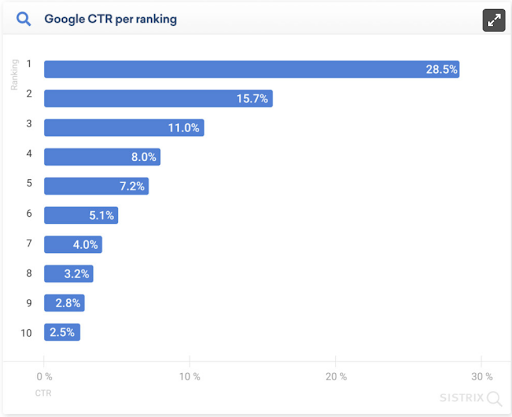
- Paid Ads: A 2023 report by WordStream found that the average CTR for Google Ads across all industries is approximately 3.17% for search ads and 0.46% for display ads.
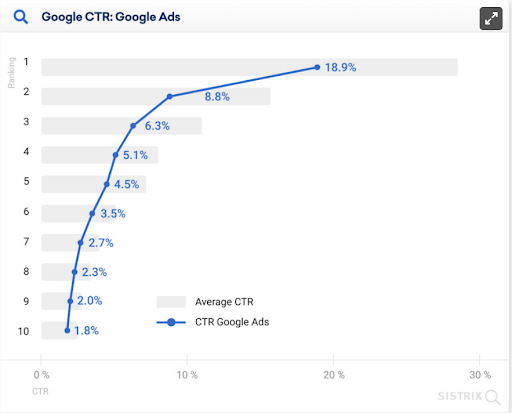
2. Cost Per Click (CPC)
- Organic Search: There’s no direct cost for clicks, but there’s an investment in SEO efforts and content creation. The cost is often considered an opportunity cost for time and resources spent.
- Paid Ads: The average CPC for Google Ads varies by industry but is generally around $2.69 for search ads, according to WordStream’s 2023 data.
3. Conversion Rates
- Organic Search: HubSpot’s 2024 report shows that the average conversion rate for organic search traffic is around 16%.
- Paid Ads: The same HubSpot report indicates that paid search ads have an average conversion rate of about 2.7%.
4. Return on Investment (ROI)
- Organic Search: SEO often provides a higher ROI in the long term due to its compounding effect and the lack of ongoing costs per click.
- Paid Ads: ROI can be high in the short term but requires continuous investment. A 2024 study by PPC Hero shows that businesses earn an average of $2 for every $1 spent on Google Ads.
Boost Your Law Firm’s Visibility: Contact Us to Optimize Your SEO and Ads Strategy!
Choosing between ranking organically and paying for Google Ads depends on your law firm’s goals, budget, and timeline. While organic SEO offers long-term benefits and cost-effectiveness, Google Ads can provide immediate visibility and targeted traffic. By understanding the strengths and limitations of each approach, you can develop a balanced strategy that leverages the benefits of both to achieve optimal results.
For personalized advice on how to integrate SEO and Google Ads for your law firm, contact Attorney Marketing Network and schedule your free consultation today.
